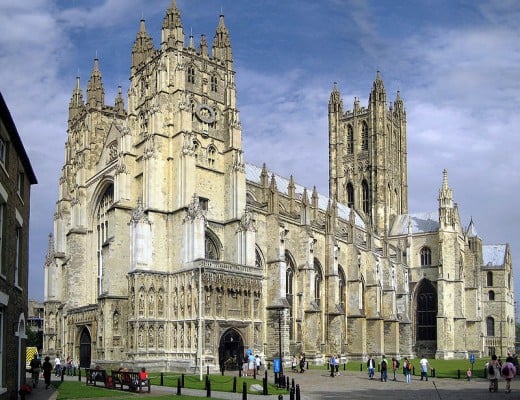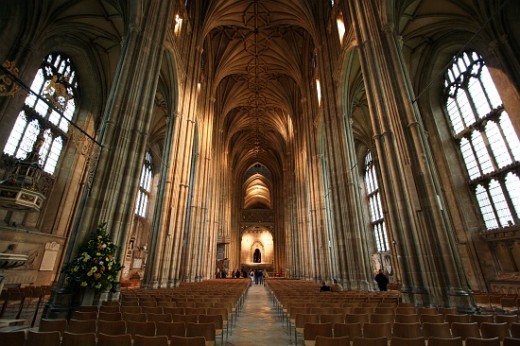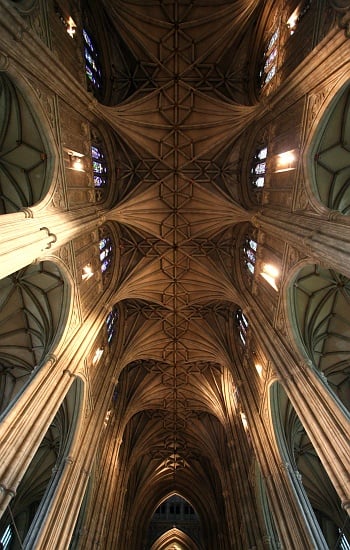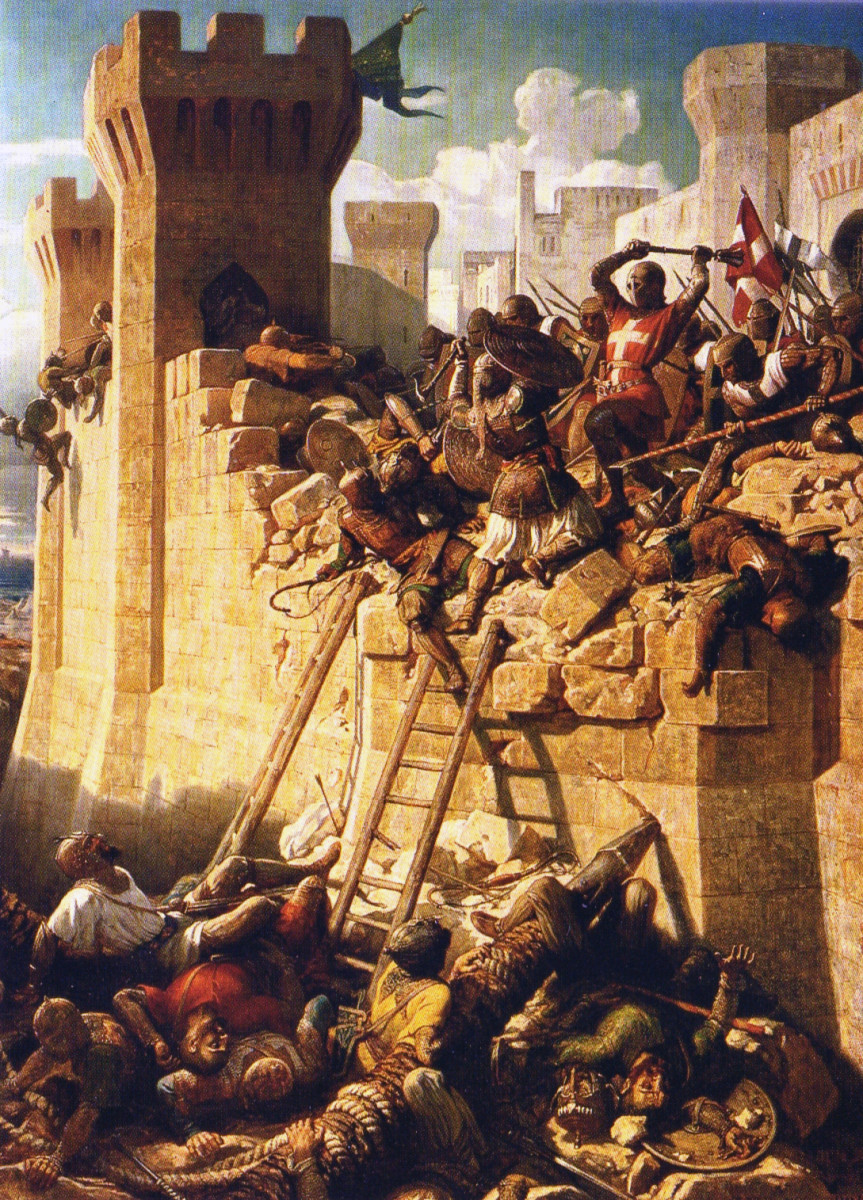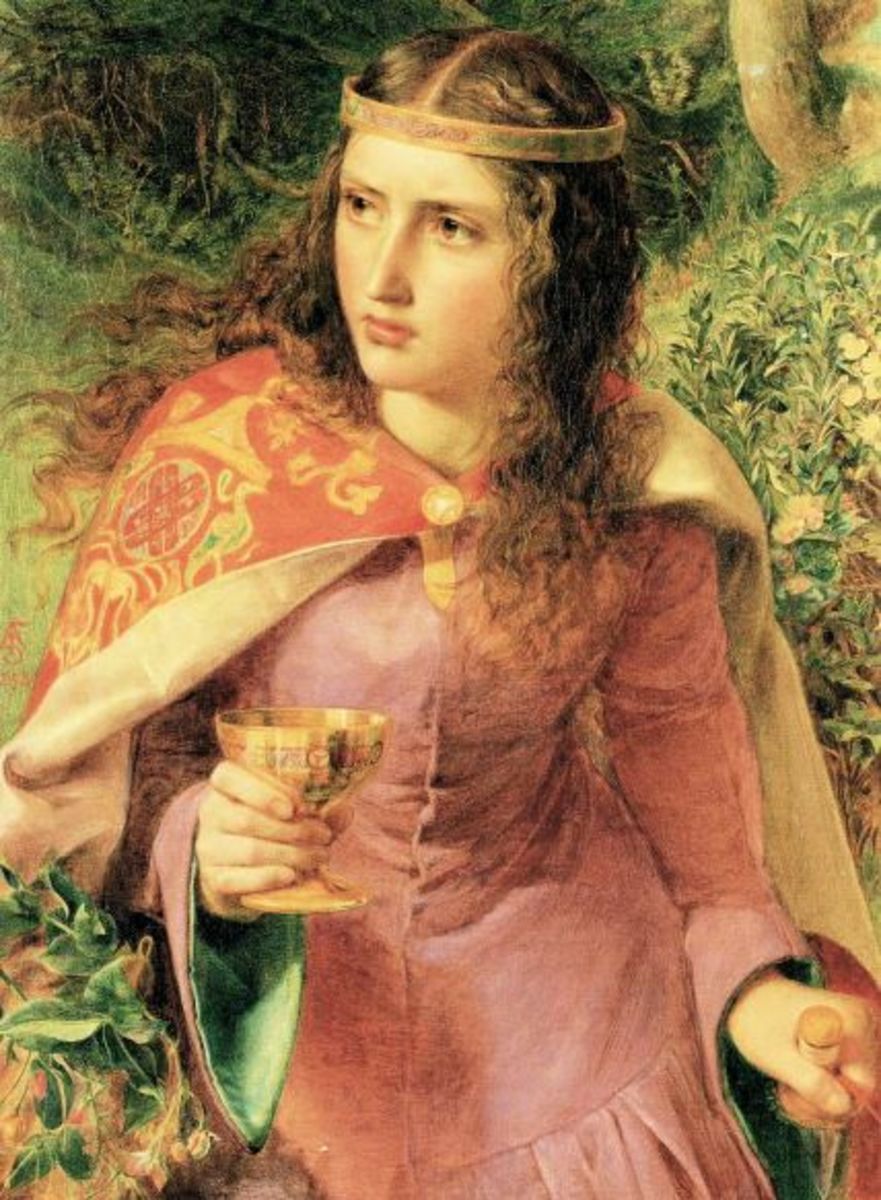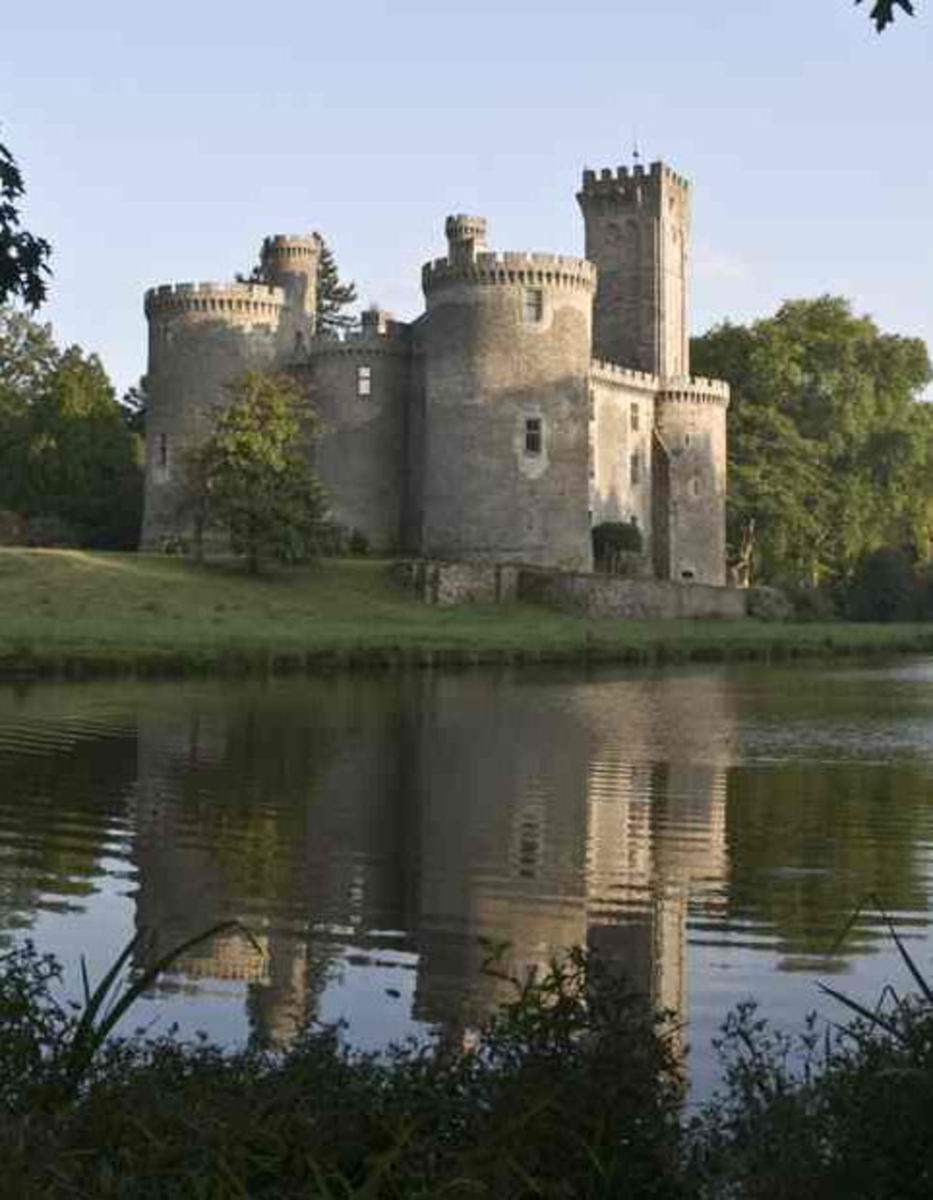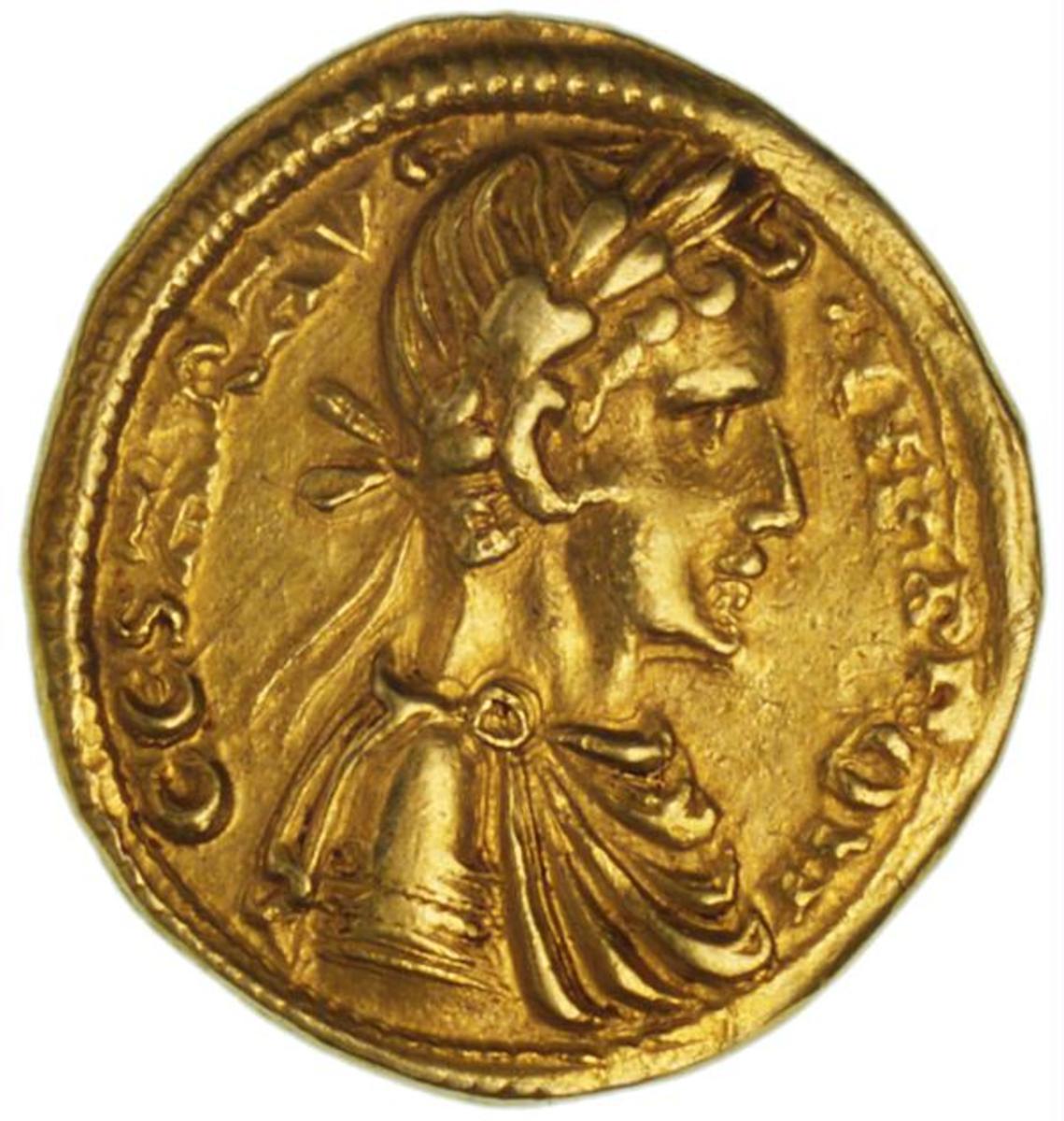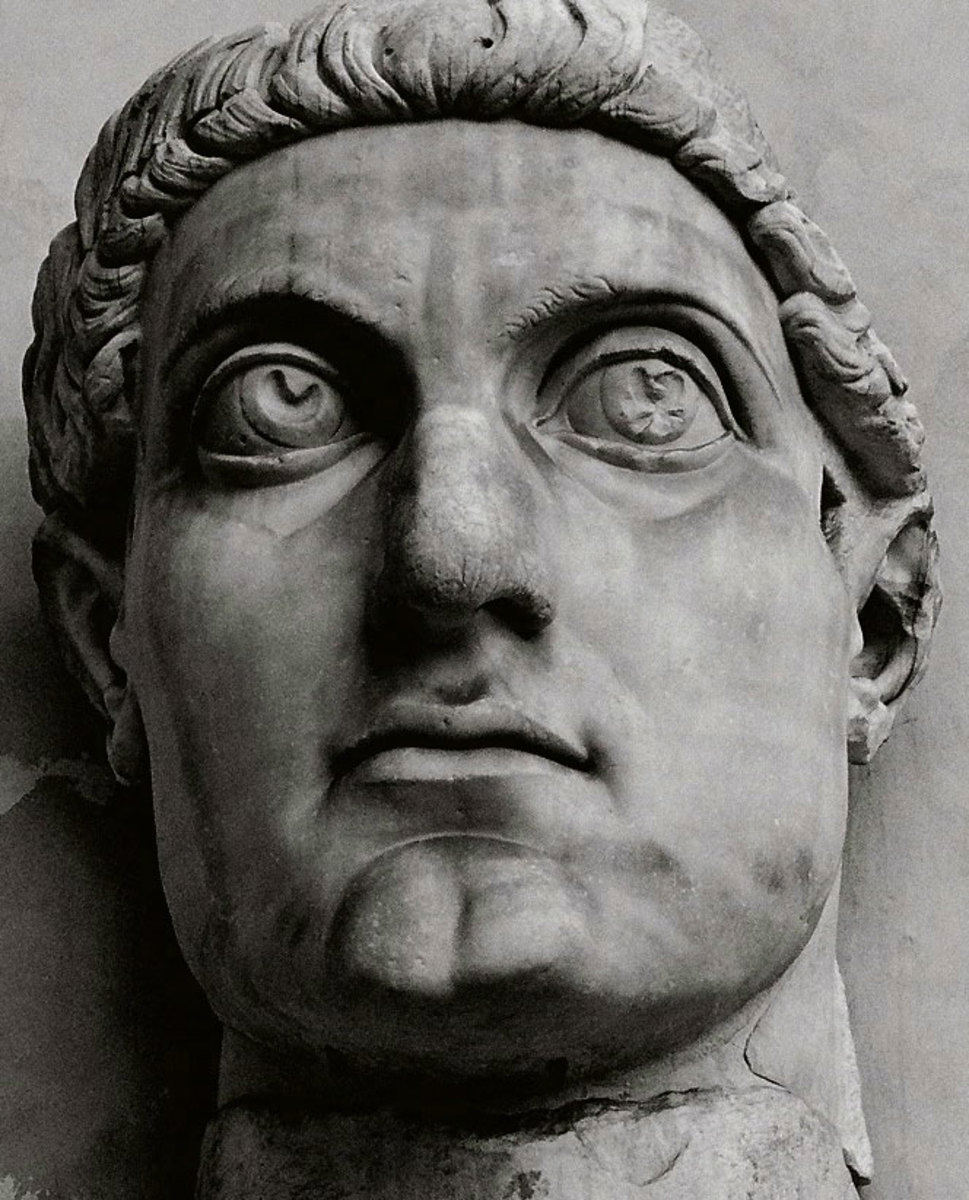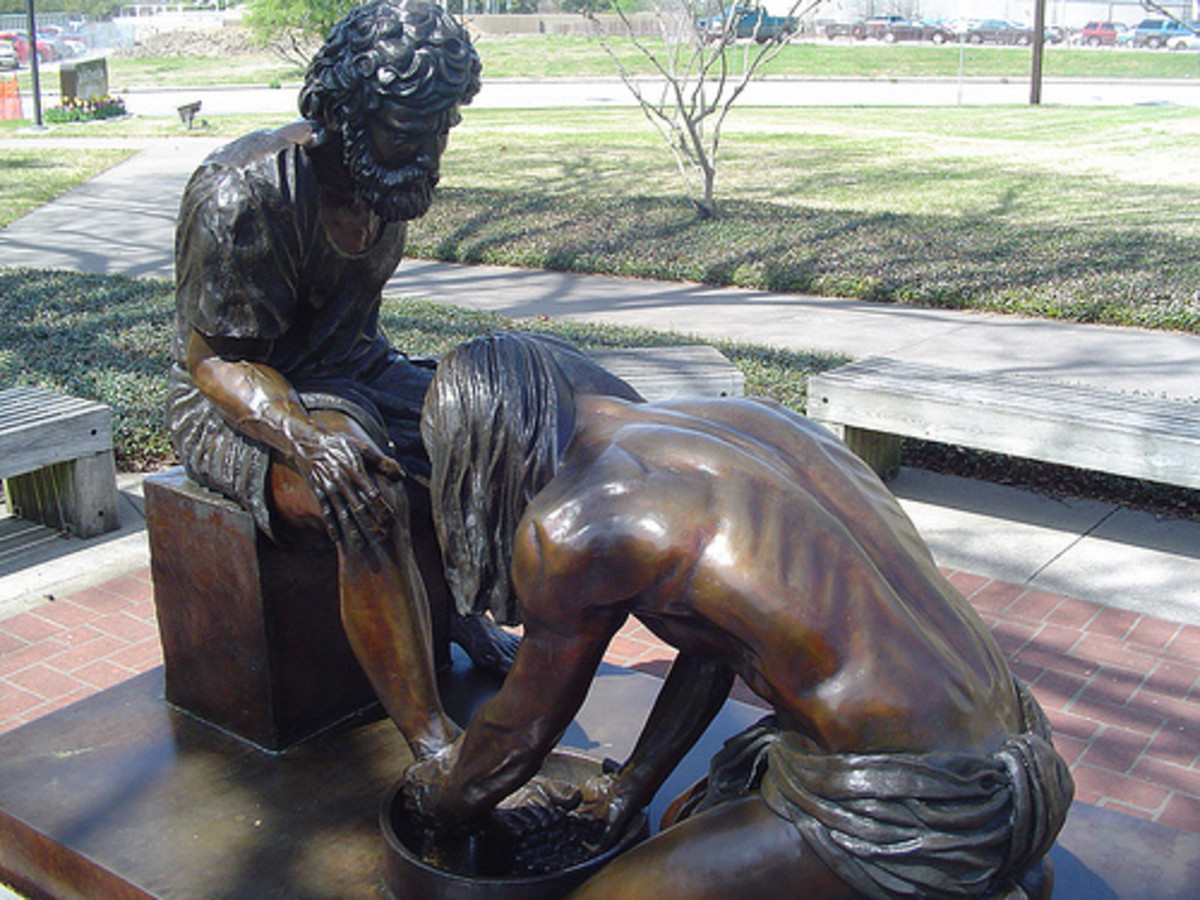The Third Crusade
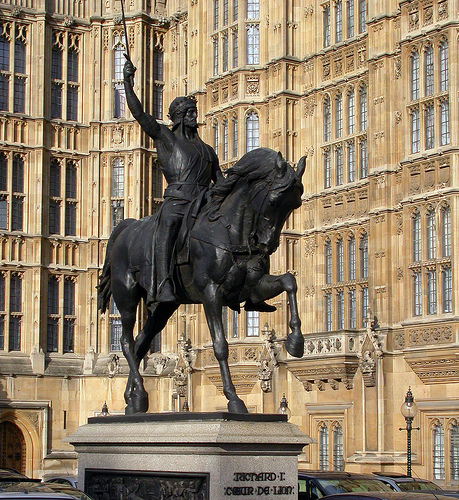
Eleanor of Aquitaine
Eleanor of Aquitaine (1122-1204) may be the most remarkable personality of the Twelfth Century, and Aquitaine itself, may have been Europe's most brilliant civilization.
Eleanor accompanied her husband, Louis VII of France, on the Second Crusade along with her own company of Amazonian female troops dressed in white tunics, slit up the side; wearing knee-high red leather boots with orange linings. She claimed that both she and her women were accompanying the Crusaders in order to help care for the wounded, but the women’s presence proved to be a distraction. Some said her presence is what doomed the venture to failure.
Eleanor was married to two kings and bore two more. First husband, Louie VII of France, divorced her after his subjects blamed her for the failure of the Second Crusade. Their marriage to was annulled on the basis of “consanguinity.” Louis was pious; she was not, and her behavior on the crusade was less than impeccable.
She then, at the age of thirty, married the 19-year old, King of England, Henry II. Eleanor was the mother of King Richard the Lionheart and his brother, the bad King John. Enraged over Henry's infidelities, she moved back to her native Aquitaine and established Poitiers as the center for culture in Europe.
Although Eleanor originally retired to Poitiers as an attempt at a trial separation, she soon found herself in a much different situation. In 1173, she led a rebellion with her three sons against Henry, after which he had her imprisoned in various fortresses for the next 15 years. She had the complete love and respect of her son Richard, and John was for better words “terrified” of her. After Henry’s death she had a large role in ruling England during Richard’s absence, and she counseled John during his own reign.
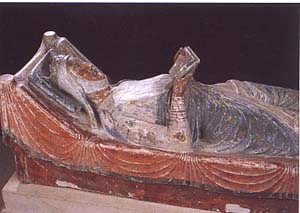
King Henry II of England
Henry II (1133-1189) may have been the greatest English King ever. He founded the House of Plantagenet that ruled for over 300 years, instituted English Common Law, and created the first bureaucracy in the country to administrate his affairs. He surely united England as never before.
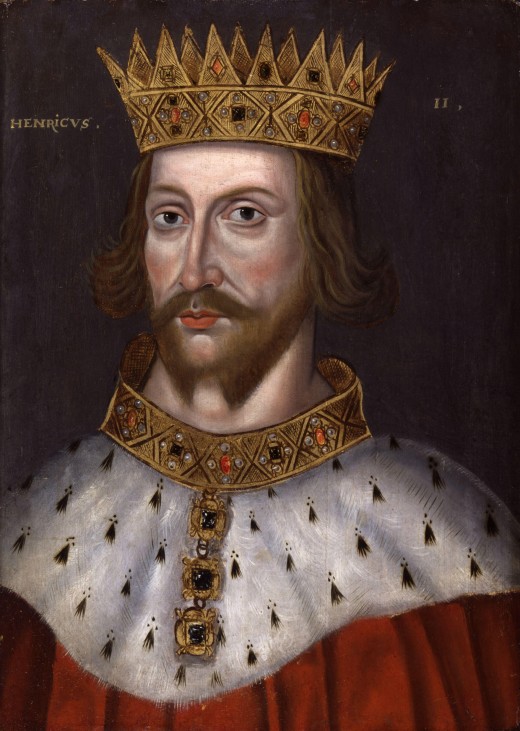
Thomas Becket
Archbishop Thomas Becket (b. 1118) was murdered on the afternoon of December 29, 1170, inside of the most holy place in the country of England, the Canterbury Cathedral. Ironically, the assassins were the men of his best friend and sovereign, King Henry II.
Before becoming Archbishop, Becket served as Chancellor of England. He proved to be an outstanding administrator, an excellent military commander, and the king's most loyal servant. King Henry II and Thomas Becket hunted and drank together regularly. In 1162, King Henry II named Becket the Archbishop of England—apparently believing Becket would continue to do his bidding.
Instead, Becket cut back on the expenditures of church funds that were used by the crown for lavish entertainments saying, "I am not the man I was when I was chancellor."
In other words, he not only took his new position as a man of God seriously, but placed his own duties and responsibilities to the church above the interests of his friend and King. "I have gone from being a patron of play actors and a follower of hounds to a shepherd of souls."
One day, King Henry II said in the presence of his closest men that he wished Becket would disappear. Upon hearing this, the four knights made their way to Canterbury Cathedral and killed Becket; they believed themselves to be doing the king a favor.
Becket’s murder traumatized not only England, all of Europe as well. King Henry II sobbed when he was told of Becket's death and went into seclusion. He fasted, and allowed himself to be scourged in public as penance.
Becket's tomb became the most famous in Europe and his story was immortalized in Chaucer's Canterbury Tales. His bones were destroyed by King Henry VIII in 1538.
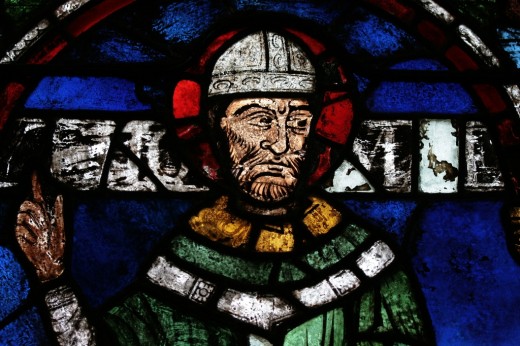
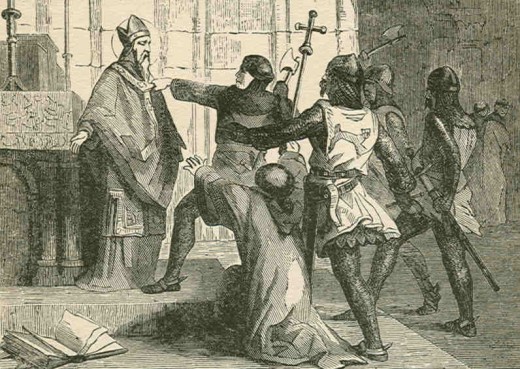
Saladin & the True Cross
Saladin (died 1193) was a Muslim Kurd, who would prove to be the pivotal figure of the Crusades. He was handsome and charming; he ate only fruit, drank only water, lived in a small house, and slept on a simple mat.
In 1187, Saladin assembled an army of 30,000 warriors, including 12,000 cavalry, at the Sea of Galilee. He first struck the Christian city of Tiberias. The Christians living in the Holy Land were able to muster 20,000 men, but only 1,200 of these men were actually soldiers.
They were led by King Guy, who carried with him the True Cross. The battle took place where Jesus gave the Sermon on the Mount, and nearly all of the Christians were butchered. Survivors were castrated and used as sex slaves for those Muslims with homosexual proclivities.
According to the Golden Legend, a medieval best-seller written in 1260, the True Cross was from a seed of the Tree of Life from the Garden of Eden. Adam died with the seed in his mouth and provided the fertilizer for the tree, which then grew in the place where Adam was buried. This tree was used millennia later for the crucifixion of Jesus.
St. Helena, mother of Constantine the Great, discovered the True Cross—on the spot where now sits the Church of the Holy Sepulchre in Jerusalem. The cross was on display in Jerusalem until it was seized by the Persian Emperor Khousrau II in 614.
Thirteen years later, Christian Emperor Heraclius marched into Persia to get it back—and he did. It was hidden in Jerusalem for 470 years by the Christians living there; Christians aware that the Muslims were steadily seeking it so as to destroy it.
It was revealed to the First Crusaders after they reconquered Jerusalem in 1099, and it remained on display there for pilgrims until King Guy carried it into the battle against Saladin in 1187. The battle was lost, and Saladin took the True Cross to Damascus.
Several Christian emperors tried to buy it back but were refused. Saladin knew this sacred object was priceless to Christians, and therefore refused any ransom for it. This contributed to the ill feelings that Christians harbored toward Muslims for centuries. The True Cross was never seen again.
Saladin led his Muslim army south and conquered Jerusalem for Islam. Saladin was an honorable victor, in this case. After his victory in Jerusalem he did not permit looting or the killing of civilians, he also promised free access to the Church of the Holy Sepulchre for Christian pilgrims. He did have his guards killed when he became suspicious of the, and was known to have the unruly hanged. Saladin was a tremendous military commander.
Upon hearing that Jerusalem had once again fallen, the pope died of shock.
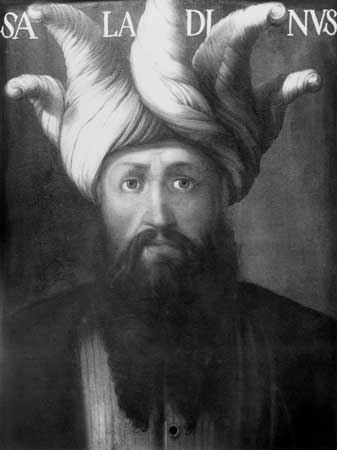
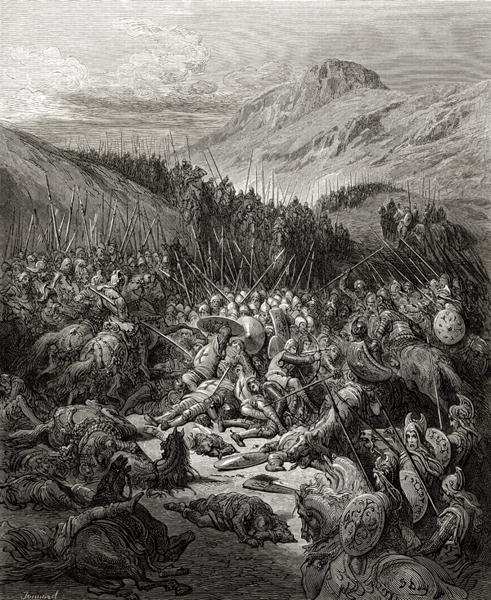
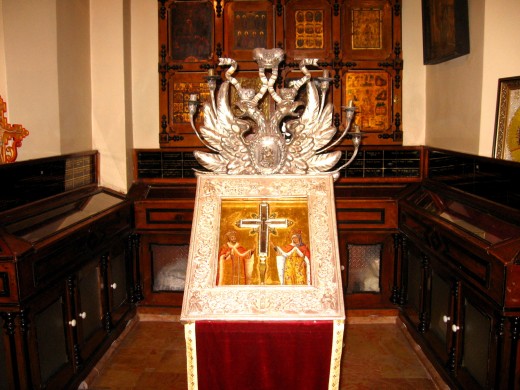
ASSASSINS
The word "assassin" comes from an Arabic word Hashshashin, which means "smoker of much hashish." This was a cult of Shiite Muslim hit men that began in the Twelfth Century.
Their true aim was Islamic Revolution but they were mostly known for the murder of the famous with daggers in public—in broad daylight—to terrorize rulers and the populace.
The Shiites bridled under the rule of the dominant Sunni Muslims. They claimed they were clearing a path for a messiah-like figure to come, the Hidden Imam. Their founder, Hassan ibn al-Sabah, assured them of a martyr's paradise as a reward for these assassinations.
There were perhaps 40,000 Hashshashin in the 1100s, and they were known as the fedayeen (the faithful).
Frederick Barbarossa
Frederick I (1122-1190), Emperor of the Holy Roman Empire, known as Barbarossa because of his red beard, became one of the most revered figures in European history. He participated in the ill-fated Second Crusade as a 21-year-old, but was repelled by the behavior of his fellow Crusaders. Those behaviors included robbing villagers in Hungary, and regularly fighting amongst themselves. They rioted, rebelled, and deserted.
Barbarossa was crowned emperor in 1152, at Aachen by the only English Pope in history, Adrian IV; he was crowned on the throne of Charlemagne. Four years later, he split Bavaria to create a new state called Austria (East Land).
In 1166 Barbarossa fell from his place at the top of the world into complete destitution. A strange disease befell his army after they had conquered Italy, including the Vatican. An unusual rain came to Rome that lasted for weeks without ceasing; the sewage system failed; massive flooding then ensued, ruining the food supply and polluting the drinking water. His army revolted and Barbarossa fled north with only his wife and the clothes on their backs.
He concluded that God had punished him for making war against other Christians—in particular for interfering with the affairs of the Church in Rome. The experience transformed him.
Barbarossa was determined to lead a Third Crusade to atone for the shameful defeat of the Second Crusaders. He declared that this time every Crusader must be a wholly committed Christian. No thieves, beggars, crooks, or prostitutes would be allowed amongst the crusaders; looting and pillaging would be severely punished; and if anyone harassed a Jew, he would lose a hand and be sent home.
Unfortunately for the Crusaders, Barbarossa died of a heart attack while crossing an icy river in Turkey on his way to the Holy Land with his army. The Muslims—who greatly feared Barbarossa—saw this as a sign from Allah that He was with them.
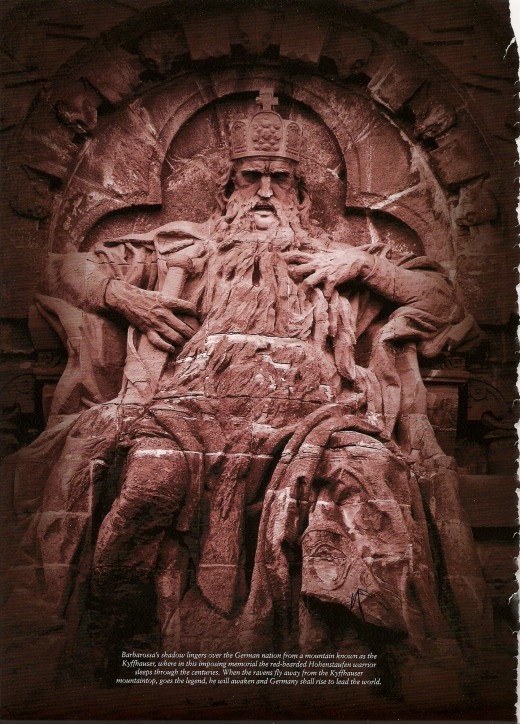
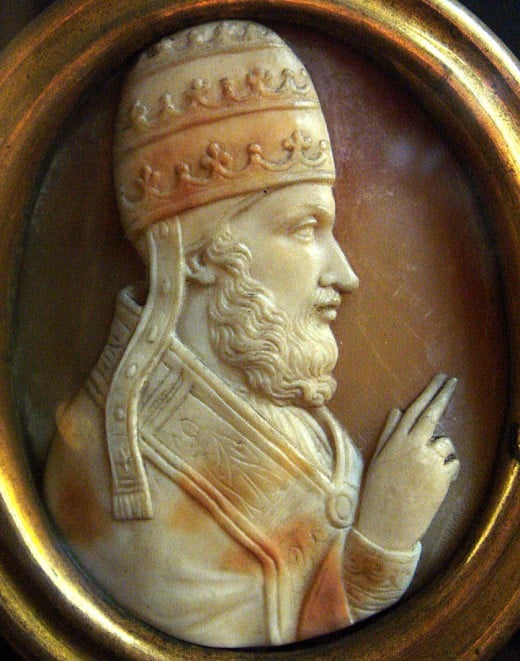
The Third Crusade
Europeans had a hard time coming to grips with why God would allow them to lose to the Muslims in the Second Crusade. Archbishop Josias of Tyre provided the explanation: God was disgusted with the sinful lifestyles that had taken hold of the Christians in the Holy Land after the generation of the First Crusade had passed.
"How many and how great are the calamities that our sins require. The anger of God has lately permitted us to be whipped," he said.
The Christians of the Holy Land had become a wealthy but depraved society filled with lazy, lustful, carnal, murderous, adulterous crooks that no longer attended church. Muslim writer 'imad al-Din agreed, describing Christian women as "proud and scornful, foul-fleshed and sinful, ardent and inflamed, tinted and painted, desirable and appetizing, exquisite and graceful, seductive and bullying, with shapely buttocks. Broken down little fools who are ravished and debased by Arab men."
The Third Crusade was the largest of them all—200,000 men with 50,000 horses. The three leaders were Frederick Barbarossa; King Philip of France; and King Richard the Lionheart of England. When Frederick died along the way, the Germans—half of the Crusader Army—went home.
King Richard the Lionheart and King Philip were close friends but very different men. Philip was not an attractive leader; he was not charming or daring. He was quiet, and had no interest in appearing well groomed. Even the hunt held no interest for him. He was a famous prude, and had even banned foul language in his kingdom; penalties were both in place and enforced for offenders of this law. To Philip, his friend Richard was a rude, arrogant and foulmouthed man.
Regardless, they sailed off together for the Holy Land. On the way, Richard stopped to conquer Sicily and Cyprus. In 1191 they landed at Acre, a Muslim port on the Mediterranean Sea. Richard brought miners with him, who dug beneath the walls of the city to weaken their foundations. His men lobbed hard, dense boulders from the mangonels that Richard had brought along from Sicily.
Richard's Norman archers fired with his favorite weapon: the crossbow. Interestingly, the crossbow was a weapon that had been forbidden by the Pope as an "inhumane" weapon. Richard invented the Mate-griffon—a great wooden castle covered with flame resistant vinegar, which he personally ascended in order to shoot his crossbow from a greater height— offering a nice view of his targets on the walls of Acre. The city surrendered a month after Richard's arrival.
A squabble erupted over the spoils of Acre that resulted in two of the other small armies going home, and enmity continues to brew between the remaining French and English. They were eighty miles from Jerusalem. Before long, the French left, too, leaving the English and a contingent from Burgundy to take Jerusalem alone. Saladin then arrived with his army.
Richard had 2,700 Muslim prisoners, whom he threatened to execute unless his demands were met. He then negotiated their release in exchange for 1,500 Christian prisoners; 200,000 pieces of gold; and the return of the True Cross.
His demands were met with agreement—but Saladin never delivered on his end of the bargain, perhaps he believed that Richard was bluffing. Knowing that there was no way he could march to Jerusalem with all of these prisoners, Richard brought them out in full view of the Muslim Army and butchered them, all of them—including women and children.
Richard then marched across a spider-infested desert to Jerusalem. On the way, Saladin unleashed a 30,000 man attack; first African and Bedouin infantrymen, then the Turkish Calvary. Through the use of new, brilliant battlefield tactics, Richard prevailed.
No one knows why, but Richard never tried to take the city of Jerusalem. He was encamped only twelve miles outside of the city—he could see it in the distance—with fresh horses and plenty of food. Saladin considered Jerusalem lost. Richard shocked both sides when he just up and went home. The Christians now held a strip of land on the coast ninety miles long and ten miles wide.
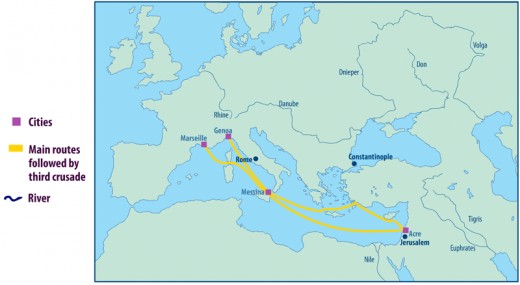
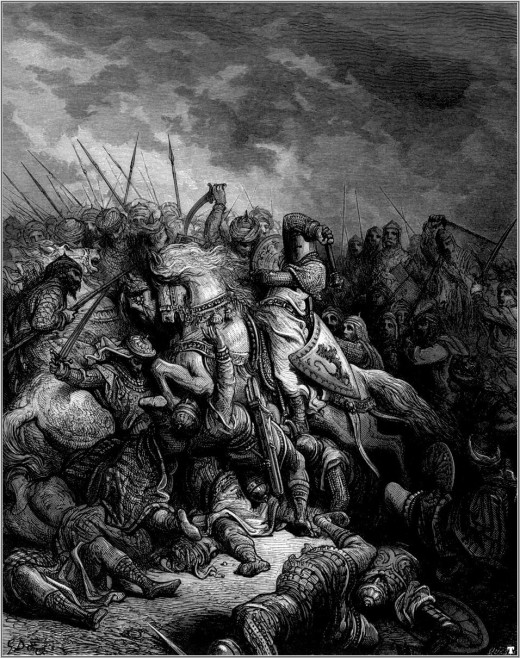
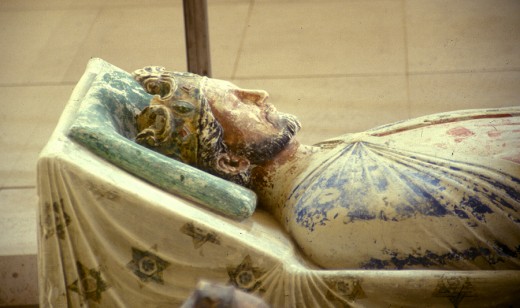
Richard the Lionheart
King Richard the Lionheart (1157-1199) was tall, handsome, strong, athletic, graceful, and charismatic. He was nicknamed the Lionheart for his tremendous courage and battlefield prowess.
Richard used a two-handed battle sword and rode a massive Spanish stallion. He loved music, poetry, and bawdy jokes; fine wine and food; hunting and jousting. He was a master strategist and unequaled leader of men. Saladin said of The Lionheart: "He is pleasant, upright, magnanimous, and excellent."
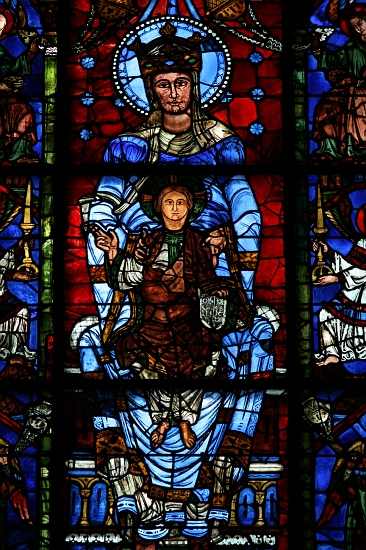
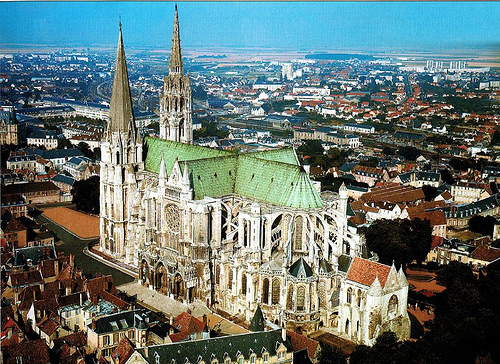
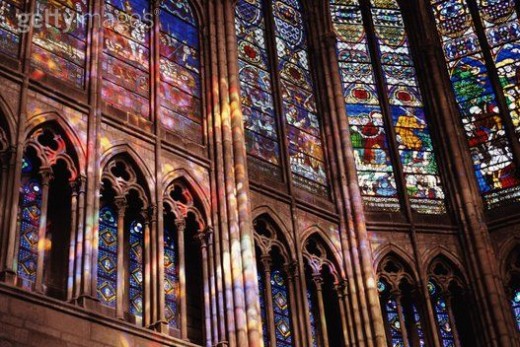
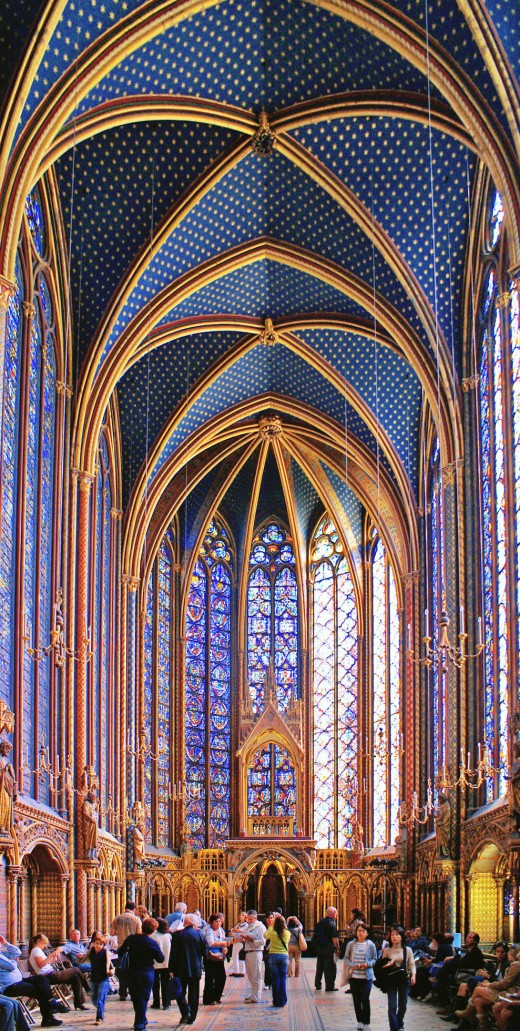
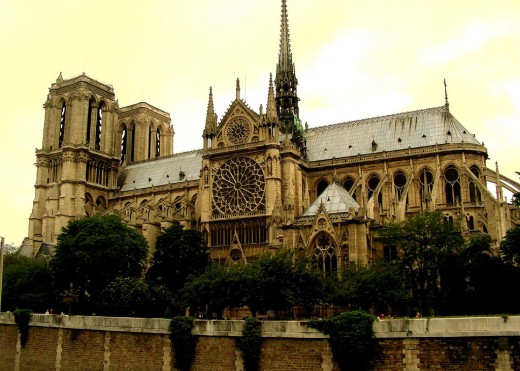
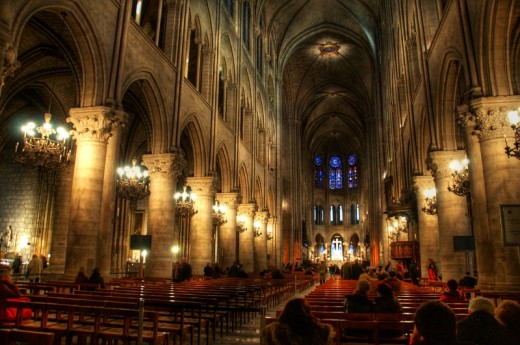

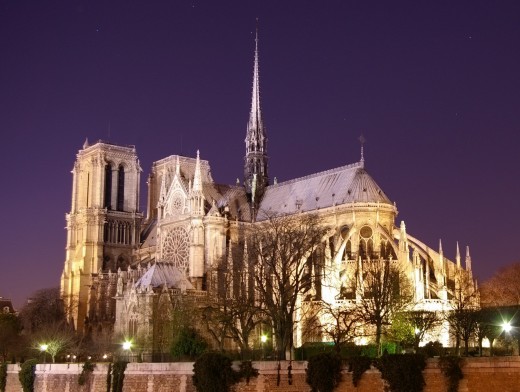
Gothic Cathedrals
The incredible Gothic Cathedrals (built in the shape of the cross) of Europe had their beginnings in France with the work of Abbot Suger who designed and constructed the Cathedral at St. Denis. It was completed in 1151. Amazingly, it was built in a mere three years. The kings of France during the period from the fifth to the nineteenth centuries are buried there.
Previously, Romanesque churches were very dark inside; architects had not yet figured out how to have large and plentiful windows while still providing the support needed for construction of the roof. The new Gothic Cathedrals used piers, vaulted roofs, flying buttresses and exterior buttresses to transfer the weight to the ground.
Most abbeys prior to the Gothic Cathedrals were as austere as the lives of the monks who lived within their walls. Towers, porches, polished stonework, paintings, and gold were not allowed in order to reflect what was believed to be true Christian humility. Now, a new idea took hold that churches should be beautiful to inspire in the congregants the awesome glory of God—the God of light.
The Chartres Cathedral is one of the most beautiful in the world. It doubled as a school of theology, philosophy and literature. Chartres Cathedral has 186 stained glass windows, and its nave, 121 feet high, was unparalleled.
Chartes is also one of the best preserved of all the cathedrals, receiving neither natural nor war-caused damage. It is also a UNESCO World Heritage site. Not only are the windows spectacular, but there is a light show in the evenings that plays off of the outside of the windows; it is said to be amazing.
King Louis VII commanded that Paris must have a cathedral equal to any in existence, and in 1163, new construction began on Notre Dame Cathedral. This cathedral was the most expensive public works project of the Middle Ages. Donations were made from across Europe. Those who had no money delivered building materials to the site.
It is a fact unknown to many, that Notre Dame Cathedral took 200 years to build, starting with Louis VII in 1163. Henry the VI of England was crowned here, as was Mary Stuart, Napoleon and Josephine. Oddly enough, it was originally a Roman temple.
The German poet, Heinrich Heine, said, "Gothic Cathedrals were built by men filled with conviction. We moderns have opinions, but it requires something more than an opinion to build a Gothic Cathedral."
The author Ken Follett, in his book The Pillars of the Earth, describes "the irresistible attraction of building a cathedral—the absorbing complexity of the organization, the intellectual challenge of the calculations, the sheer size of the walls, the breathtaking beauty and grandeur of the finished building."
In 1174 the English got in the game by commissioning a new Christ Church Cathedral at Canterbury.
Between 1050 and 1350 eighty cathedrals, five hundred large churches, and ten thousand parish churches were built in Europe. This building boom was unmatched anywhere in the world until the twentieth century—and hardly any further progress was made in construction techniques, according to historian Jean Gimpel (The Cathedral Builders).
The term Gothic was originally intended as an insult, comparing the building style to the wild tribes of the Goths who had destroyed the Roman Empire.
The builders of cathedrals were housed in temporary wooden lodges; these men later came to be known as the free masons. From these men arose the Masonic Orders.

